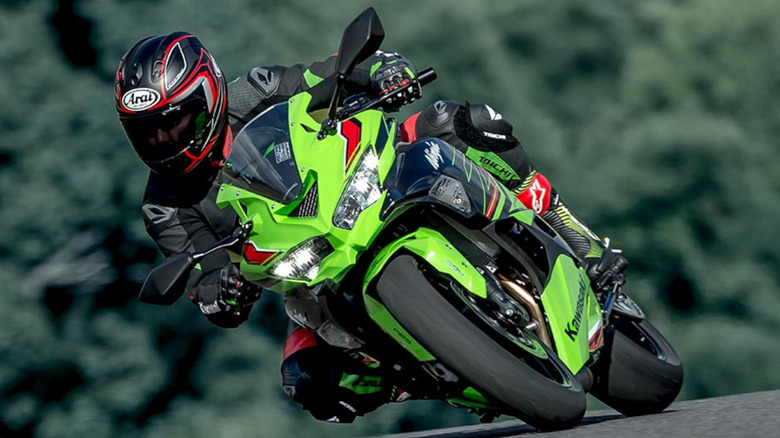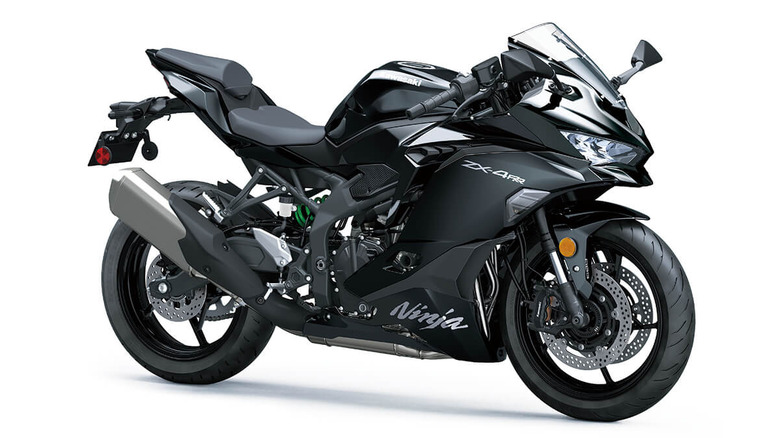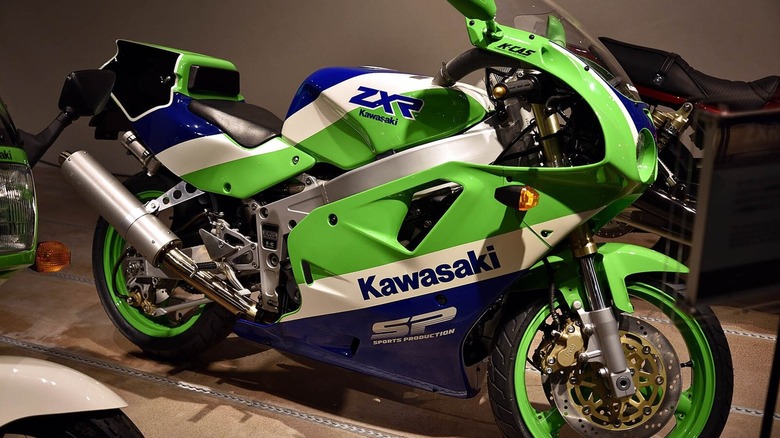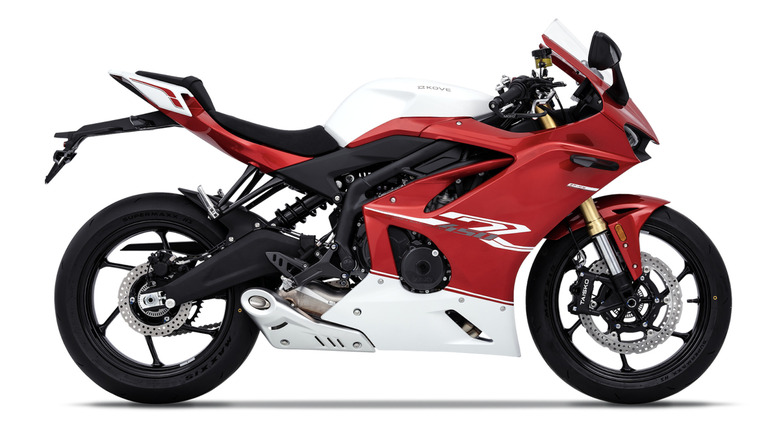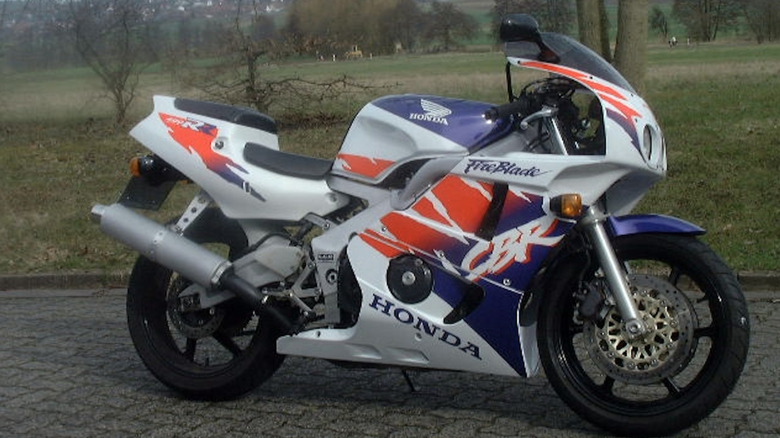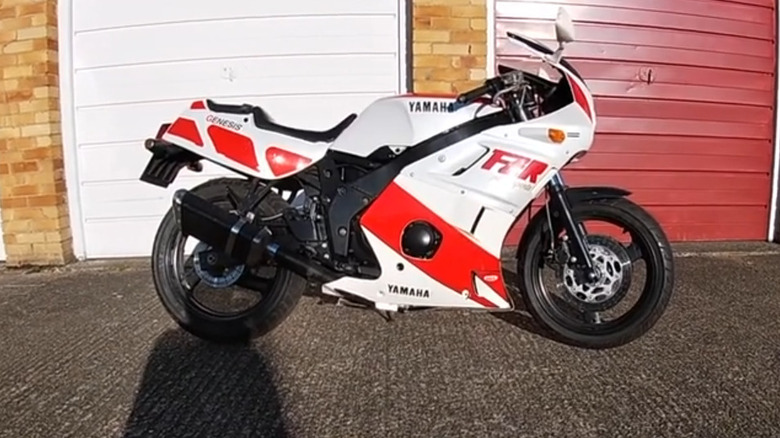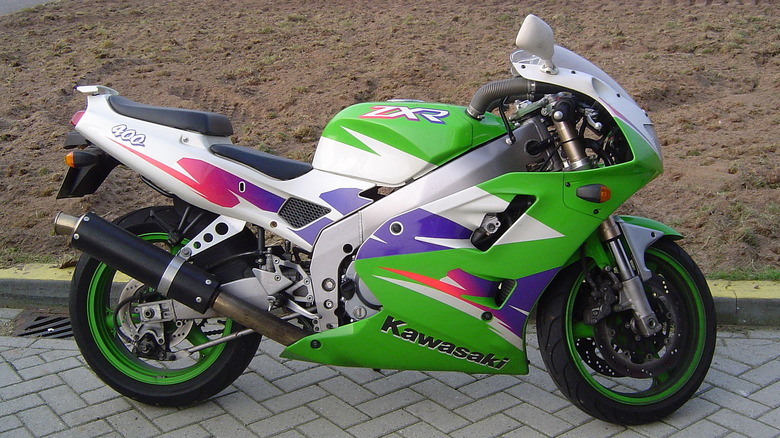5 Of The Fastest 400cc Motorcycles In The World
There's something particularly exciting about fast bikes. Perhaps it has something to do with the fact that, unlike in a car, a rider is much more exposed and quite literally closer to both the engine and the road, and can feel the wind as they throttle the accelerator to the limit. You can find no shortage of YouTube videos and other social media posts of motorcyclists achieving top speeds and trying to break records on all kinds of motorcycles.
Enthusiasts will often discuss speed and acceleration with all kinds of qualifiers, such as which are the fastest V8 motorcycles ever made. Another way to categorize specs and records is by looking at all the different models made by a given manufacturer, such as which are the fastest Ducatis or the fastest motorcycles Harley-Davidson ever built. Because of the wide range of different kinds of motorcycles on the road, it's interesting to see which are the fastest even when they're not equipped with the largest engines available. A 400cc motorcycle won't be able to compete with the fastest 600cc bikes, for example, but they can still reach impressive top speeds.
Here are five of the fastest 400cc motorcycles in the world, based on listed top speeds by manufacturers and reputable sources, as well as documented top speeds from riders. More information on how these bikes were evaluated can be found at the end of this list.
Kawasaki Ninja ZX-4RR - 140 mph
There are some pretty fast motorcycles with engines that displace around 400cc, but none can touch the Kawasaki Ninja ZX-4RR, with some riders seeing an indicated 150 mph on their digital dials. Relying on onboard instrumentation, riders have also seen the 2023 Ninja ZX-4RRR achieve a 0-60 mph time of 4.27 seconds and reach 124 mph — a number that exceeds the top speeds of nearly every other bike in its class — in 15.29 seconds. These speeds are thanks in part to the inline-four, 16-valve, liquid-cooled, four-stroke 399cc engine. Kawasaki has been making engines since the 1950s, and this particular unit can produce 76 bhp and deliver 29 ft-lb of torque — making it a powerful and attractive option for a sub-500cc bike.
With a 4-gallon tank, the 2025 Kawasaki Ninja ZX-4RR has a range of about 165 miles, which means it gets around 41 miles to the gallon. An ERI indicator is included so riders can better manage fuel efficiency. Kawasaki loaded the bike with several other advanced features, including an assist and slipper clutch, electronic throttle valves, a quick shifter, adjustable power modes, smartphone connectivity, and Kawasaki Traction Control.
Kawasaki ZXR400 - 139 mph
Manufactured throughout the '90s, the Kawasaki ZXR400 is the predecessor to the ultra-fast Kawasaki Ninja ZX-4R. While it can't quite match its successor, it comes admirably close, as the 1995-1998 iterations of the Kawasaki ZXR400 have a top speed of 139 mph, according to Motorcycle News (MCN). At the heart of this vehicle is a 398 cc 16-valve transverse four-cylinder engine, along with a 6-speed gearbox. It could produce 26 ft-lb of torque and 62 horsepower.
As MCN puts it in a review, "Nothing much happens below 10,000 rpm, so any progress is accompanied by a flurry of revs and a banzai-like howl from the end can. But all this fury is worth it because the little ZXR produces 62 bhp, which can propel it to an almost unbelievable 140 mph-plus top speed." MCN also states that this later model of the ZXR400 could cover a quarter mile in 12.9 seconds. Based on road tests conducted by Motosprint, MCN also reports that the 1991-1992 ZXR400 can do the same in 12.2 seconds. The publication doesn't have data on 0-60 mph times, but Motostatz says that an unspecified model of the bike can make the run "in around 3.7 seconds" and go "0-100 mph in around 9.5 seconds if piloted by a lightweight and competent rider."
Kove 450RR - 137 mph
It might be debatable if a motorcycle equipped with a 450cc engine can be fairly compared to others in the 400cc range, but since the Kove 450RR is still a sub-500cc motorcycle, it's more or less in the same class as bikes like the Kawasaki Ninja ZX-4RR and Honda CBR400R. Technically, its in-line 4-cylinder, 4-stroke, liquid-cooled engine has a displacement of 442.9cc and can output 70 horsepower (53 kW) at 13,000 rpm and produce nearly 29 lb-ft (39 Nm) of torque. With this kind of power, the Kove 450RR can reach a top speed of 220 kilometers per hour, which is just shy of 137 miles per hour.
Since this is one of the newer bikes on the road, there isn't a wealth of time trials or recorded test runs to know if some riders can push the speedometer even further. Similarly, it's tough to tell if its acceleration is as impressive as its top speed, since there aren't many verifiable 0-60 runs to go by yet, though hopefully that will change soon. Kove Moto is a China-based manufacturer that has steadily been building a strong reputation since its founding in 2017, with a focus on motocross, adventure, and off-road motorcycles. The Kove 450RR is a sleek-looking rally bike that is available in fire engine red with black and white accents or jet black with red and gray accents. With an aluminum frame that's lightweight and helps the bike go faster, the Kove 450RR can look like a black and red blur as it blazes by at its stunning top speed.
Honda CBR400RR - 130 mph
Honda says its CBR400R, which runs on a 4-stroke, DOHC, 4-valve, parallel-cylinder engine, can be used for "a wide range of situations from touring to sport riding." That's especially true for the latter, since the bike is one of the fastest 400cc motorcycles on the road. For example, at least one YouTuber has recorded an indicated 130 mph on a run with a 1992 Honda NC29.
Produced in the early 90s, the NC29 is an unofficial moniker of the CBR400RR, which is powered by a liquid-cooled, 16V 399cc engine that generates 59 horsepower at 13,000 rpm and 29 lb-ft of torque at 10,000 rpm. There doesn't seem to be much in the way of precise acceleration stats for the bike from any reputable sources, and of course acceleration is one of those wonkier metrics that depends just as much on the rider as it does on the bike. However, you can watch one YouTuber take a 1988 CBR 400RR to 100 kph (62 mph) in about 5 seconds.
Yamaha FZR400 - 130 mph
Like other 400 cc motorcycles that can claim to be some of the fastest, the Yamaha FZR400 is a Japanese bike manufactured in the late '80s and early '90s. The 1988-1994 Yamaha FZR400 has mostly favorable reviews in all categories from MCN, which reports that the overall top speed of the FZR400 is 130 mph. That speed is generated by a 399 cc liquid-cooled transverse four-cylinder paired with a 6-speed transmission. It can generate up to 64 horsepower and 31 ft-lb of torque.
Finding acceleration stats on the Yamaha FZR400 is a little more difficult, as there aren't nearly as many road tests available as there are for other bikes on this list. While the Yamaha FZR400 is fast, bike enthusiasts lurking on motorcycle forums tend to agree that its acceleration was lackluster. One unverified claim says that it can reach 60 mph in 5.8 seconds. A 1997 review from Cycle World also seems to confirm these sluggish starts, with a newer Cycle World article referencing the original test run and saying, "The motor was a jewel, but it didn't really start making power until the tach needle swept past 10,000 rpm on its way to a 14,000-rpm redline; peak power was at 12,000."
The 1987 FZR400 — equipped with a Genesis engine that could deliver 59 horsepower at 12,000 rpm — would take just under 13 seconds to run a quarter-mile. This same bike would need nearly 46 feet (14 meters) to make a full stop from 60 mph. With a 130 mph top speed, it's a 400cc bike that would be a blast to take out on the track.
How these motorcycles were chosen
Since motorcycle manufacturers tend to avoid posting top speeds of their vehicles, which can vary depending on the weight of the rider among several other factors, the top speeds used to determine which bikes are the 400cc motorcycles in the world come from reputable publications that focus on motorcycles, such as Cycle World and MotorCycle News (MCN), as well as recorded speeds from riders posting videos of their runs on YouTube or social media.
